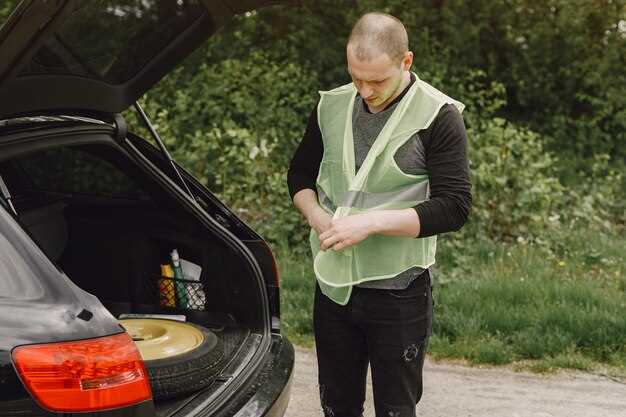
Maintaining a secure and properly installed license plate is essential for both legal compliance and vehicle aesthetics. A loose license plate can lead to various issues, including fines, damage to your vehicle, or even the loss of your plate altogether. Fortunately, reattaching a loose license plate is a straightforward process that requires minimal tools and effort.
In this article, we will guide you through the simple steps to effectively reattach your loose license plate. Whether your plate has become unfastened due to wear and tear or improper installation, our step-by-step instructions will help you resolve the issue quickly. Following these guidelines not only ensures that your license plate remains securely attached, but it also enhances the overall appearance of your vehicle.
Before you begin, gather the necessary materials such as screws or zip ties, a screwdriver, and any other tools that might assist you. Our focus will be to provide clear instructions, empowering you to take care of this simple task without the need for professional assistance. Let’s get started on securing your license plate!
Identify the Cause of the Loose License Plate
Understanding the reasons behind a loose license plate is essential for effective reattachment. Several factors can contribute to this issue. Firstly, check for missing or damaged screws. Over time, screws can wear out or fall off, causing instability. Secondly, examine the mounting bracket. If it is bent, rusted, or broken, it may not hold the plate securely in place.
Another common reason for a loose license plate is a misalignment of the plate itself. If the plate is not properly centered or aligned with the bracket, it can subject the screws to uneven pressure, leading to loosening. Additionally, vibrations from driving can gradually cause screws to become loose, especially if they were not tightened adequately during installation.
Lastly, environmental factors such as extreme weather can affect the integrity of the plate and its attachments. Moisture can lead to rusting of screws and brackets, while fluctuations in temperature may cause materials to expand and contract, weakening their hold. By identifying the specific cause of the looseness, you can take appropriate steps to secure your license plate effectively.
Gather Necessary Tools and Materials for Reattachment

Before starting the reattachment process of your loose license plate, it’s essential to gather the appropriate tools and materials. Having everything ready will streamline the task and ensure a successful fix.
1. Screwdriver: A suitable screwdriver is crucial for securing the license plate back onto your vehicle. Depending on the screw type, you may need either a Phillips or flat-head screwdriver. Verify the screw type used in your vehicle before proceeding.
2. License Plate Screws: If the original screws are damaged or missing, purchase new license plate screws. These are typically available at automotive stores or online, and select screws designed for your vehicle’s make and model.
3. Washers: Sometimes, using washers can provide extra support when reattaching a license plate. They help distribute the pressure evenly across the plate, preventing damage and ensuring a secure fit.
4. Socket Wrench: In some cases, license plates may be attached with bolts instead of screws. A socket wrench will help you easily tighten them. Check your vehicle to determine if this tool is necessary.
5. Cleaning Supplies: Before reattaching the license plate, clean the area where it mounts to your vehicle. Use a soft cloth and some automotive cleaning solution to remove dirt and debris, ensuring a good fit and preventing rust.
6. Level (Optional): To ensure your license plate is perfectly straight when reattached, you might want to use a level. This tool helps maintain aesthetics and compliance with local regulations, which may require proper alignment.
By gathering these tools and materials beforehand, you can efficiently complete the reattachment process of your loose license plate, ensuring your vehicle remains roadworthy and compliant with regulations.
Step-by-Step Guide to Secure Your License Plate Properly

Securing your license plate is essential not only for legal compliance but also for ensuring that your vehicle is identifiable. Follow these steps to properly attach your license plate.
-
Gather Your Tools
Before you start, make sure you have the following tools:
- Flathead screwdriver
- Phillips screwdriver
- Socket wrench or ratchet
- Replacement screws (if needed)
- Plate frame (optional)
-
Remove the Old Plate
If your current plate is loose, use a screwdriver or wrench to remove it. Unscrew the screws holding the plate, and keep the screws aside in case they are reusable.
-
Inspect the License Plate
Check for any damage on the plate or the brackets where the plate attaches. If the plate is bent or cracked, consider replacing it.
-
Align the License Plate
Position the license plate against the mounting brackets on your vehicle. Ensure that the holes on the plate align with the holes on the brackets for proper installation.
-
Attach the License Plate
Using the screws you saved or new ones, start securing the plate. Follow these tips:
- Insert the screws into the holes and tighten them until they are snug.
- Do not overtighten, as this can crack the plate.
-
Check for Security
Once attached, gently shake the plate to ensure it is secure. It should not move or rattle.
-
Consider Using Locking Fasteners
For added security, consider using locking license plate screws that require a special key to remove. This can prevent theft.
By following these steps, you can ensure your license plate is securely attached, reducing the risk of it becoming loose or being stolen.
